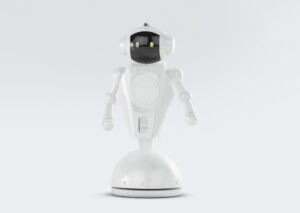How RPA Is Innovating the Life Sciences Industry

Robotic Process Automation (RPA) has proven to be an effective and innovative technology for many industries worldwide in automating manual and repetitive processes. By focusing on eliminating human error, integrating various IT system, and boosting employee productivity, RPA is also a growing technology in the Life Sciences industry. Interested in how RPA can improve efficiency in areas such as Drug Discovery, Clinical Trials, Pharmacovigilance, Validation, and so on? Read on to discover how RPA solutions – with the help of a well-structured validation and configuration framework – have the potential to change the Life Sciences and pharmaceutical industry.
Eliminate Tedious Manual Data Collection to Increase Speed and Accuracy in Drug Discovery
RPA brings endless possibilities. By integrating the technology in their processes, Life Sciences companies could manage to speed up the time to market for vaccines, while improving safety and regulatory measures. RPA could potentially improve the time to market for high-demand vaccines like COVID-19 for example. The area of drug discovery could benefit from this automated efficiency, as discovery of new vaccines is entangled in complex processes, overarching multiple systems, and data sources. Through a combination of academic journals, websites, social media, and posted patents, vaccines developers discover new trends continuously, which are inherent for their research. However, this unstructured amount of data is still manually collected on a daily basis by several employees per company.
As you can imagine: This way of data collection is a tedious and error-prone task. By integrating RPA bots, it is not only possible to save valuable time which employees can use for other tasks, it also increases efficiency by providing a constant, structured way of data collection. The robots could increase the access to important information for R&D departments to develop top-quality and necessary vaccines. It truly is a win-win situation.
Clinical Trials and Pharmacovigilance: Automated Analysis to Show Extensive Effect Overview
Integrating RPA in the drug discovery process is just one example. As I said: the possibilities are endless. Further in the development process for COVID-19 vaccines, RPA solutions can support the clinical trial phase for vaccine development. Clinical trials are typically complex, and overflowed with data sources and patient communications, which extend these trials longer than wished for and immanently increase costs.
Quick data integration with RPA could help the Life Sciences industry detect and analyze the total effect of developed vaccines in several ways. The test subjects could inform RPA robots if they experience any side effects. The robot could combine this information with medical historic data and external sources like the weather or location-based data, to provide an extensive overview for further qualitative analysis.
The bots could also reduce the number of employees monitoring the test subjects, including fewer physical appointments with its patients. Besides, by reducing the manual and repetitive filling of patient forms, these employees have more time to perform in-depth analysis.
After market introduction, the same RPA bots could help analyze the side effects that were not pre-determined, also called pharmacovigilance. These adverse events, including sentiments, could be collected on a daily basis and combined with previous analysis to continuously monitor the total effect of the introduced vaccines. Consequently, the integration of RPA solutions does not only improve operational efficiency, but also enhances maintenance of clinical trial audit logs and compliance to pharmacovigilance regulations.
Validation and Change Control: Let Robots Be of Assistance
 The life sciences industry is characterized by its highly regulatory environment. Complying with guidelines such as GxP, CSV, FDA, and EMA, demands operational processes to be faultlessly documented, including in-depth validations. Checking GxP documents for example, can be a time-consuming, manual process in which an RPA bot could lend a helping hand.
The life sciences industry is characterized by its highly regulatory environment. Complying with guidelines such as GxP, CSV, FDA, and EMA, demands operational processes to be faultlessly documented, including in-depth validations. Checking GxP documents for example, can be a time-consuming, manual process in which an RPA bot could lend a helping hand.
Although RPA solutions could not replace the mainly qualitative work of a CSV Engineer, it could still be suitable to support them. First of all, robots could check the immensely long documents for empty fields, date notations, or other CSV requirements, which in term can reduce boring manual work for the CSV Engineer. Considering FDA or EMA approvals, you would not want the delivered rapports too significantly lower the time to market because of incomplete documentation. RPA could be of great assistance in this case.
Secondly, robots could support CSV Engineers in assigning new change requests to the appropriate people. This assignment is based on pre-determined parameters and could improve speed and accuracy in the CSV process. To that end, automating the validation and change control processes with RPA solutions could undoubtedly improve the time to market for vaccines and eliminate incomplete documentation by human error.
Robots Can Help You to Validate, but How Can You Validate the Bots?
Robots can be a vital part of your validation process. But they cannot ‘simply’ be integrated in your processes. One of the greatest challenges of RPA is the validation and documentation of the RPA solutions themselves. In other words: Yes, the robots can help Life Sciences companies to validate, but how can you best validate the bots?
Strict regulations are necessary for each separate system that supports the live-saving development of vaccines or medicine. RPA automations perform on overarching IT systems which generates a need for twice the amount of process validation. A small change within one IT-system could derail a robot in the other IT systems, leading to a complete revalidation of the automatized processes.
To prevent validation errors, you will need to set up a structured framework of robot configuration, validation and change management, which is extremely important in the process of implementing RPA solutions.
RPA Life Sciences Framework: A Basis for Validated Automated Solutions
At NTT DATA Business Solutions we have developed a concrete RPA Life Sciences framework to implement RPA solutions by continuously validating and testing each system linkage separately. The robots are divided in bite-sized elements to create detailed risks assessments of each link between systems. With help of build-in error-handling procedures, these risks will be mitigated and continuously documented. If an error occurs, bot supervisors are pin-pointedly notified so they can solve the issue, revalidate, document and get the process up and running again within no time. This way, automated processes are improved, simultaneously documented, and validated per element to continuously adhere to the Life Sciences guidelines.
Additionally, this framework can be the basis of RPA solutions combined with other innovative technologies such as Artificial Intelligence (AI) and Machine Learning (ML). By including checks and boundaries, it’s possible to re-check and revalidate self-learning robots at each pre-determined boundary in order to follow all industry governance.
The possibilities are endless for innovative automations in the Life Sciences industry, where RPA can be a frontrunner. At NTT DATA Business Solutions, we are already experiencing its benefits with our Cold Chain logistics RPA solution. Temperature sensors of critical vaccines are triggering a range of RPA bots to create a seamless and continuous control of the cold chain environment, or any other critical parameter, that can be measured throughout the supply chain.
In achieving automated efficiency, RPA solutions like these can be cost-saving, timesaving and even lifesaving! Would you like to discover how RPA solutions can add value to your organization? Please don’t hesitate to get in touch.